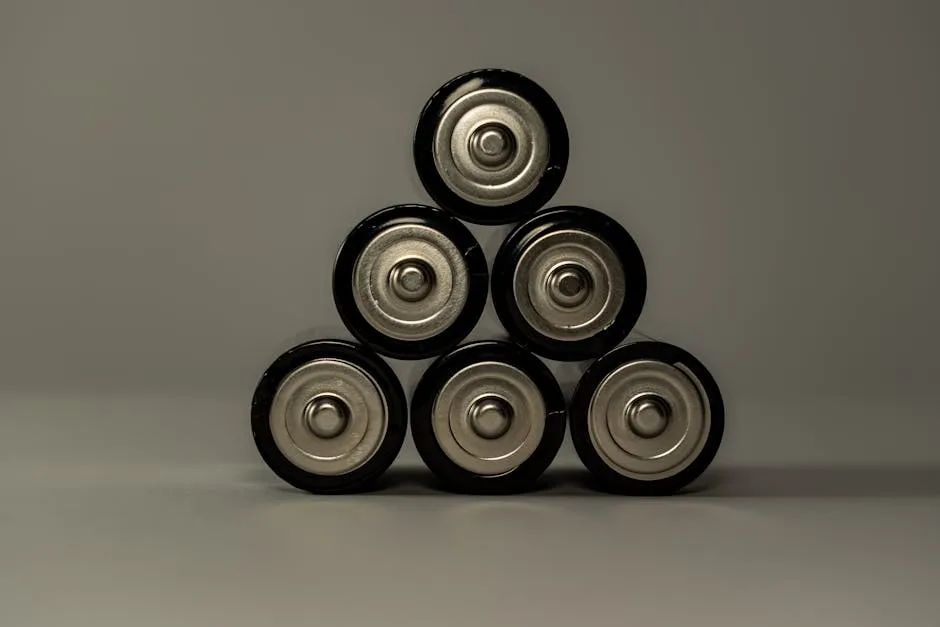"Either low-carbon or out, this is definitely not an alarmist."
Chinese power battery companies have successfully "gone to sea", and it is urgent to carry out carbon footprint management and carbon emission reduction work.

Recently, the draft rules for calculating the carbon footprint of electric vehicle batteries announced by the European Union (hereinafter referred to as the "Draft") ended the one-month comment window. The draft is the next operating rules on carbon footprint calculation under the EU Battery and Waste Battery Regulation, which will come into effect in August 2023, and has attracted widespread attention in the industry. For relevant companies, this not only requires the supply chain carbon footprint sorting and checking as soon as possible, but also directly affects the future competitiveness of products in the EU market.
According to the "Battery and Waste Battery Regulations", starting from 2027, power batteries exported to Europe must hold a "battery passport" that meets the requirements, which contains information such as battery manufacturer, battery model, material composition, carbon footprint, supply chain, etc., Among them, product carbon footprint information is the first to be "intercepted", and power battery companies need to announce the carbon footprint value of the product's entire life cycle as early as 2025.
"It's either low-carbon or out. This is definitely not an alarmist." At the recently held 2024 Annual Conference of the China Automotive Power Battery Industry Innovation Alliance, many business people admitted that the "Draft" puts forward higher requirements for battery companies 'battery carbon footprint management and computing capabilities, and Chinese power battery companies have successfully "gone out to sea". Carrying out carbon footprint management and carbon emission reduction work is imminent.
Competitive advantage looks at the next decade
Data shows that in 2023, the overall global sales of new energy vehicles will reach 14.386 million units, a year-on-year increase of 35.4%, and an average penetration rate of 16.5%. The industry predicts that by 2035, global new energy vehicle sales will exceed 70 million units, and the market penetration rate will reach about 70%. By 2035, China's new energy vehicle sales will exceed 38 million units, with a market penetration rate of 90%. The number of vehicles exceeds 200 million.
Higher sales will naturally drive an increase in the number of power batteries loaded. "By 2035, the global power battery loading capacity will reach 3905 GWh, an increase of more than five times. Among them, the loading capacity in the Chinese market is expected to exceed 1952 GWh, making it the largest market in the world." Xu Yanhua, secretary-general of the China Automotive Power Battery Industry Innovation Alliance, further pointed out that driven by the global climate policy framework, the need for energy transformation and technological innovation is urgent. Major developed countries have made electric vehicles and batteries a development focus. Although China's power battery industry is technologically advanced, the industry chain is strong and at the forefront of the world, but the leading position in the industry is not solid. The US Inflation Reduction Act, The EU's Battery and Waste Battery Regulations will have a greater impact on the future global battery regional pattern, and there is also uncertainty in the overseas layout of Chinese companies. The next ten years will be a critical period for whether China's battery industry can continue to maintain its competitive advantage.
"Carbon footprint is becoming a key threshold indicator." Xiao Zhongxiang, assistant to the chairman of Yiwei Lithium Energy, pointed out that carbon reduction may be just a multiple-choice question for enterprises, but now "carbon content" has become a yardstick to measure the contribution of enterprises and a must-answer question for development, changing from passive actions to proactive actions. Carbon footprint management requires the disclosure of a large amount of supply chain data, and the management method has gradually changed from a closed management system to a transparent management system.
Carbon footprint management challenges
Carbon footprint or a key obstacle for power batteries to "sail" to the EU.
Liang Rui, vice president of Xinwangda, pointed out that the average carbon emissions from battery production are between 60 kg and 120 kg per kilowatt-hour, and the median is 80 kg. It is estimated that China's power battery shipments this year will be 1150 gigawatt hours. Then, its carbon emissions are approximately 69 million to 138 million tons. Power batteries themselves are green energy and contribute to sustainable development, but their own carbon emissions should also attract attention.

In fact, power battery carbon emissions mainly come from production and upstream supply chains. Among them, the cathode material sector accounted for the highest proportion of carbon emissions, reaching 49%; the carbon emissions of battery cell production and battery pack packaging accounted for 22%; the anode material and aluminum sectors accounted for 11% and 12%. Therefore, to achieve green operations, the upstream supply chain is the top priority of carbon emission management. However, my country's power battery upstream supply chain is highly dependent on foreign imports. The external dependence of lithium, cobalt and nickel reaches 75%, 98%, and 90% respectively. Traceability to the supply chain is difficult, and the data quality is difficult to guarantee.
The "Draft" adjusts the power modeling and calculation method, retaining only the two calculation models of "national average power consumption portfolio" and "directly connected power", and excludes the calculation models of "supplier power products" and "residual power consumption portfolio" directly. "This means that companies cannot use their corresponding green electricity carbon emission factors by signing green electricity purchase agreements. It turns out that companies want to buy some carbon sinks and green electricity, but this road has been blocked." Liang Rui said.
Xiao Zhongxiang further pointed out that if the carbon footprint of power battery products is calculated by using the national average electricity consumption mix, China's current carbon emission factor is higher than that of European and American countries, and also higher than that of other power battery producing countries such as Japan and South Korea.
"Data security issues are also very serious. There is a strict management system for national data outbound." Liang Rui further stated that the management of corporate carbon footprints is also uneven. Some companies have relatively high carbon footprints, some have failed to promote sustainable development of supply chains, and some have poor control over upstream supply chains. Compared with leading international companies, there is a certain gap.
Multi-party collaboration promotes reasonable rules
"Some countries and regions are using green and low-carbon as excuses to create trade barriers. This is a real problem that they will face in participating in international competition in the future." Ma Aimin, deputy director of the National Climate Strategy Center, pointed out that for companies, on the one hand, they must understand foreign rules and requirements and strive for a good external environment; On the other hand, enterprises must do their own work well, find out the bottom line of carbon emissions, formulate emission reduction targets and corresponding strategies and action roadmaps, optimize operational energy efficiency, expand the use of renewable energy, create green buildings, advocate green working methods, and adopt Green logistics and other methods to reduce carbon emissions in their own production and operation, while promoting the upstream and downstream low-carbon transformation of the industrial chain.
"Carbon neutrality is not the end, sustainable development is. The industrial chain is very long, and only when everyone walks together can it be sustainable." Xiao Zhongxiang expressed the hope that the EU will introduce an operating rule with fair rules, reasonable data, true audits, and fair results. This requires the joint efforts of the government, enterprises, third parties and other parties.
Liang Rui also suggested that the competent department or industry association should take the lead in establishing a carbon footprint accounting system. At the same time, data compliance exit requires the coordinated efforts of the state and regulatory agencies to ensure the overseas business of power batteries while comprehensively considering safety and compliance. Not affected.
"Carbon emission reduction is a common challenge faced by the entire industry chain." Meng Xiangfeng, assistant to the chairman of Ningde Times, pointed out that by 2025, Ningde Times will achieve carbon neutrality in core operating links, and by 2035, it will lead the industrial chain to achieve carbon neutrality in the value chain. He suggested that China could quickly establish its own battery carbon footprint accounting rules, methodology and database, as well as review and certification mechanisms, and strengthen consultations with the EU to promote mutual recognition of databases, methodologies and carbon footprint statements between China and Europe.







